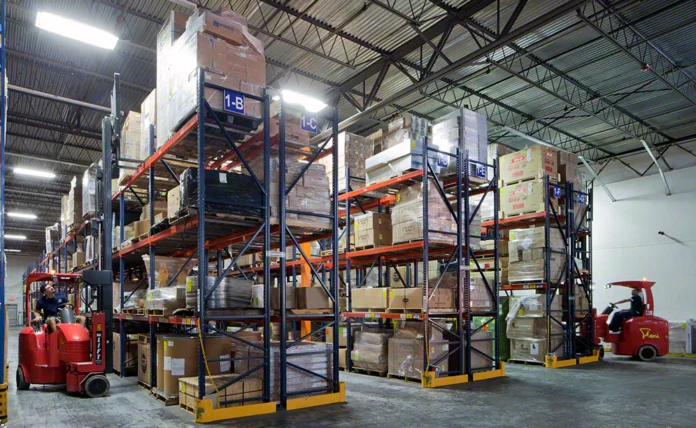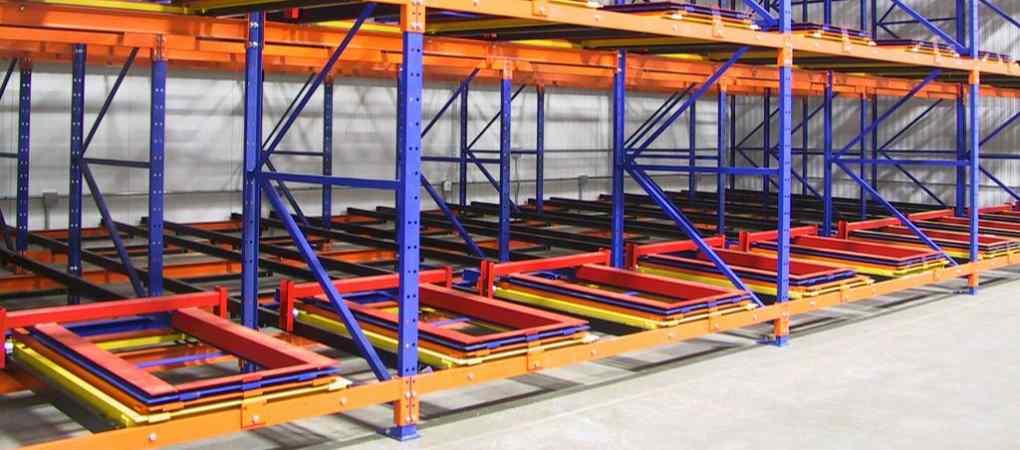Warehouses play a crucial role in modern supply chain management, but their efficiency can be hindered by overcrowding. In this introduction, we will explore the challenges posed by crowded warehouses and how they impact operations. Understanding these challenges is essential for warehouse managers to develop effective strategies and solutions to optimize space utilization, improve productivity, and ensure seamless inventory management.
The Basics of Push Back Racking: How Does it Work?
Cramped warehouse? Push back racking to the rescue! This push back racking system utilizes inclined rails and carts to store pallets deep within your space, maximizing what you can fit. Think last-in, first-out: new pallets push older ones back, creating a dense, organized stack. To grab a specific pallet, simply remove the front one – gravity ensures smooth forward movement for the rest.
What’s the benefit? More storage in less space, obviously. But it goes beyond that. Unlike other tight-packed options, push back racking lets you access any pallet without shuffling the whole stack. And because multiple pallets are readily available from a single aisle, picking becomes much faster, boosting overall warehouse efficiency.
So, if your inventory turnover is high and space is tight, push back racking might be your warehouse hero. It maximizes storage, keeps things accessible, and gets your orders out the door faster – a win-win-win for warehouse and customers alike.
Key Features and Benefits of Push Back Racking:
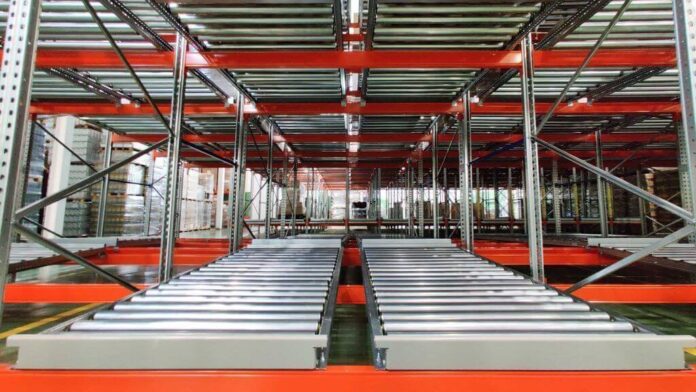
Push back racking is a popular storage solution that offers several key features and benefits. Let’s explore them:
- High-density storage: Push back racking allows for efficient use of space by maximizing storage density. It enables you to store multiple pallets deep within each lane, resulting in a higher storage capacity compared to other rack systems.
- Selectivity and accessibility: Despite its high-density design, push back racking provides excellent selectivity and accessibility. Each lane operates independently, allowing for easy access to every pallet stored. This feature is especially beneficial when dealing with products with different SKUs or varying demand.
- FIFO inventory management: Push back racking facilitates the first-in-first-out (FIFO) inventory management system. With this system, the pallets that are loaded first are also the ones that are unloaded first. This is crucial for industries where product expiration dates or freshness matters, ensuring that older stock is used before newer stock.
- Reduced labor and handling time: By using gravity to move pallets forward and backward, push back racking minimizes the need for forklift operators to enter the rack system. This reduces labor costs and speeds up the loading and unloading process, resulting in increased productivity.
- Versatility and adaptability: Push back racking can be customized to meet specific storage requirements. It is available in various sizes, configurations, and weight capacities, making it suitable for a wide range of products and industries.
- Enhanced safety: Push back racking incorporates safety features such as locking mechanisms and safety stops to prevent accidental pallet releases or collisions within the system. These features help protect both the stored products and warehouse personnel.
- Durability and longevity: Built with robust materials like high-quality steel, push back racking offers long-lasting durability even in demanding warehouse environments. This ensures a reliable storage solution that can withstand heavy loads and frequent use.
In summary, push back racking provides high-density storage, selectivity, and accessibility, along with FIFO inventory management capabilities. It reduces labor and handling time, offers versatility, enhances safety, and boasts durability. These features and benefits make push back racking an excellent choice for optimizing storage space and efficiency in warehouses or distribution centers.
Why Push Back Racking is a Game-Changer for Crowded Warehouses
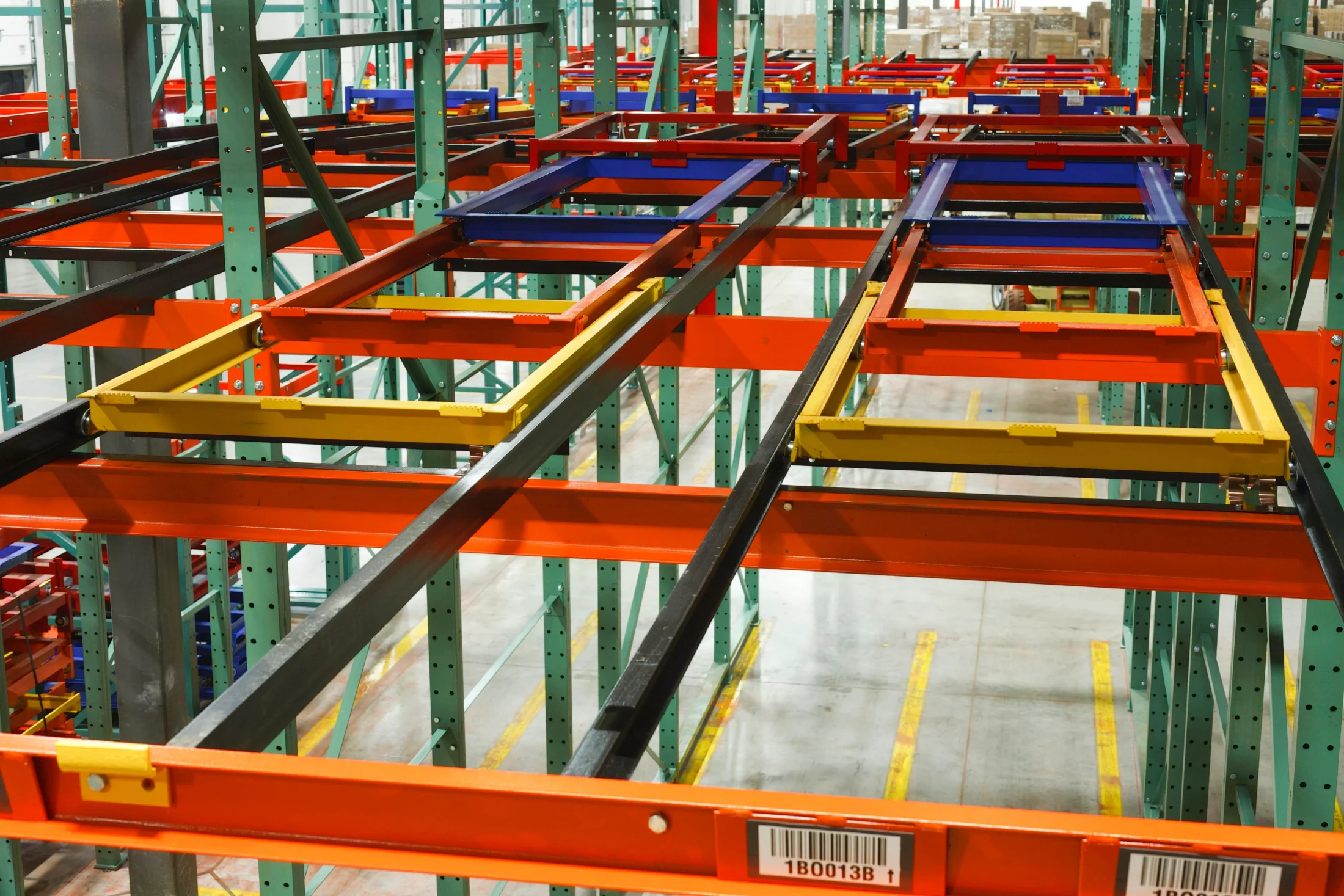
Warehouses are often battlegrounds for space. Traditional racking systems gobble up square footage, while high-density alternatives often sacrifice easy access. But fear not, for there’s a knight in shining armor named push-back racking!
This ingenious system utilizes inclined rails and carts to create a dynamic pallet storage paradise. New pallets gently nudge older ones back, like a Tetris master on overdrive. This clever design lets you pack in twice or even thrice the inventory compared to old-school racking, maximizing every inch of your precious warehouse floor.
But push-back racking isn’t just about cramming more stuff in. Unlike its space-saving cousins, it keeps all your pallets readily accessible from a single aisle. As you remove pallets, the carts gracefully roll forward, like a perfectly choreographed pallet parade. This means faster picking, happier workers, and orders flying out the door like never before.
So, if your inventory turnover is high and space is at a premium, push-back racking could be your warehouse hero. It’s a win-win-win for everyone: more storage, easier access, and a smoother flow of goods. Get ready to wave goodbye to cluttered aisles and hello to a storage revolution!
Remember, push-back racking isn’t just a storage solution; it’s a strategic investment in your warehouse’s efficiency and profitability. By maximizing space, enhancing accessibility, and promoting safety, it empowers you to handle higher volumes, reduce costs, and ultimately, keep your operations running like a well-oiled machine. So, ditch the storage struggles and embrace the power of push-back racking!
Tips for Implementing Push Back Racking in Your Warehouse
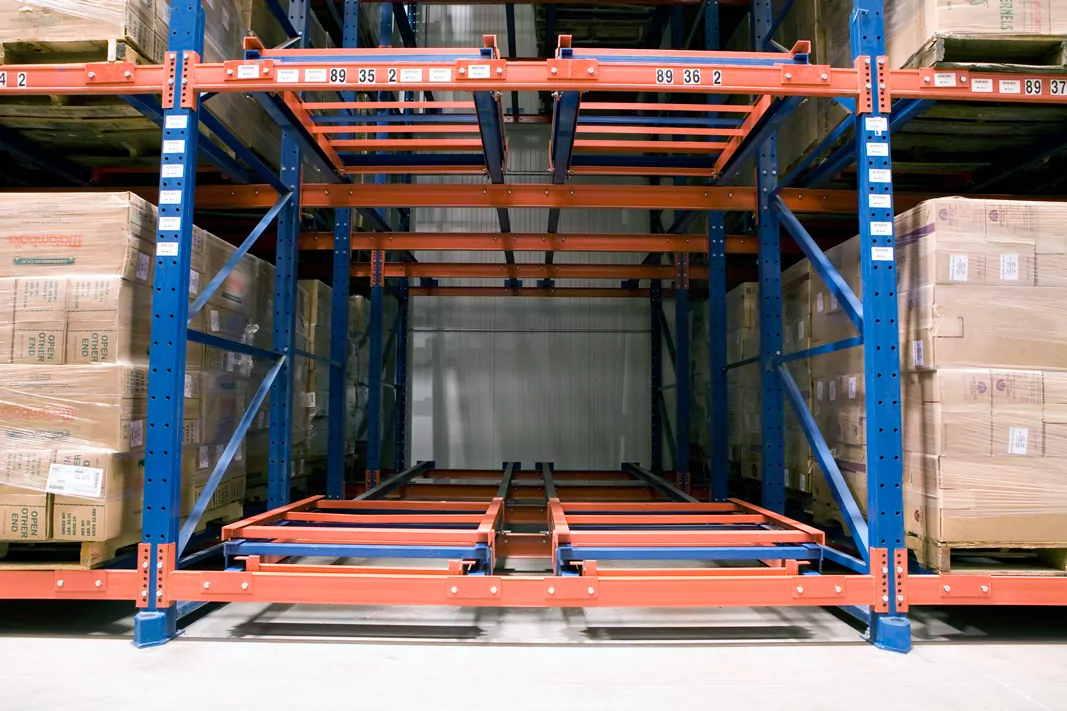
Implementing push back racking in your warehouse can significantly improve storage density and operational efficiency. Here are some tips to help you successfully implement push back racking:
- Assess your needs: Before implementing push back racking, evaluate your warehouse space, inventory characteristics, and operational requirements. Consider factors such as product dimensions, weight, turnover rates, and access requirements to determine if push back racking is suitable for your needs.
- Plan the layout: Design an efficient layout that maximizes the available space and optimizes material flow. Consider factors such as aisle width, column spacing, and placement of loading and unloading areas. This will ensure smooth operations and ease of access for your staff.
- Consult with experts: Seek advice from experienced professionals or rack manufacturers who specialize in push back racking systems. They can provide valuable insights into design considerations, load capacities, safety requirements, and installation guidelines.
- Train your staff: Proper training is essential for safe and efficient utilization of push back racking. Ensure that your warehouse staff receives adequate training on how to load and unload pallets correctly, operate the system safely, and identify any potential issues or risks.
- Optimize product sequencing: Arrange your products strategically within the push back racking system to optimize picking efficiency. Group items based on their frequency of use or other relevant criteria to minimize travel time for your operators.
- Regular maintenance: Establish a maintenance schedule to inspect the push back racking system for any signs of wear or damage. Regularly check components such as wheels, rails, and brakes to ensure proper functioning and avoid accidents.
- Monitor inventory levels: Keep track of inventory levels closely to prevent overstocking or running out of stock. Implement inventory management systems that provide real-time visibility into stock levels, ensuring efficient replenishment and reducing unnecessary downtime.
- Safety measures: Implement safety measures such as installing guardrails, using safety pins or locks, and conducting regular inspections to ensure the integrity of the system. Regularly train your staff on safety protocols and encourage a safety-conscious culture in the warehouse.
By following these tips, you can successfully implement push back racking in your warehouse and realize the benefits of improved storage density and operational efficiency.
Conclusion: Embrace the Power of Push Back Racking to Optimize Your Warehouse Space and Efficiency
Craving maximum warehouse efficiency? Push back racking might be your magic potion. This dynamic system, with its nestling carts on inclined rails, packs in twice the storage, accessible from one side while replenishing from the other. New goodies push older ones back, ensuring you always grab the freshest first. Plus, it’s flexible, adaptable to various products and palletizing needs. Embrace this space-saving, efficiency-boosting hero and watch your warehouse transform!
